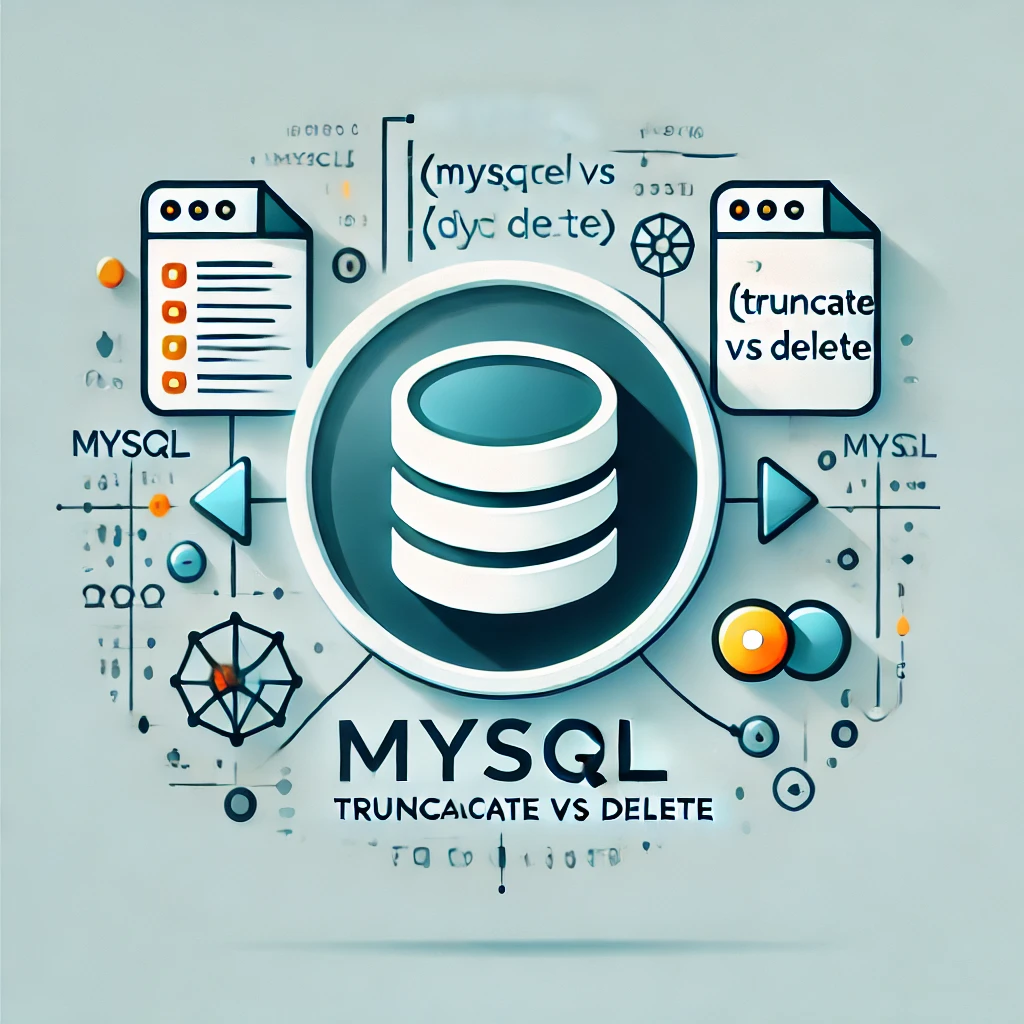1. What is the TRUNCATE Statement?
Basic Concept of the TRUNCATE Statement
The TRUNCATE statement in MySQL is a command used to remove all data from a table at once. Unlike the DELETE statement, which removes rows individually, TRUNCATE internally recreates the table to clear its data. This makes it highly effective for efficiently deleting large amounts of data.
Basic Syntax
The basic syntax of the TRUNCATE statement is as follows:
TRUNCATE TABLE table_name;This removes all rows from the specified table and resets it to its initial state. However, since deleted data cannot be recovered, caution is required when using this command.
Example: Basic Usage
In the example below, a users table is created and then cleared using the TRUNCATE statement:
CREATE TABLE users (
id INT AUTO_INCREMENT,
name VARCHAR(100),
PRIMARY KEY (id)
);
INSERT INTO users (name) VALUES ('Taro'), ('Hanako'), ('Jiro');
-- Execute TRUNCATE
TRUNCATE TABLE users;
-- The table is emptied, and AUTO_INCREMENT is reset.In this example, all data in the table is removed, and when new data is inserted, the id column will start again from 1.

2. Differences Between TRUNCATE and DELETE
Differences in Speed and Performance
TRUNCATE is significantly faster than DELETE because it is designed specifically to clear entire tables. DELETE removes rows individually, which can be slow when dealing with a large number of rows. On the other hand, TRUNCATE deletes data by recreating the table internally, making it highly efficient for bulk deletions.
Example: Performance Comparison
When deleting millions of rows, a DELETE statement may look like this:
DELETE FROM users WHERE condition;By contrast, TRUNCATE allows you to delete all rows at once with:
TRUNCATE TABLE users;The performance difference becomes more obvious with very large tables—DELETE can take considerable time, whereas TRUNCATE completes almost instantly.
Rollback Differences
The TRUNCATE statement cannot be rolled back. Once executed, the data is permanently deleted and cannot be restored. In contrast, DELETE can be rolled back when used within a transaction, which allows recovery in case of errors. This makes DELETE safer in certain contexts.
Selective Deletion Differences
The DELETE statement can use a WHERE clause to delete rows based on specific conditions, while TRUNCATE does not allow selective deletion. For example, to delete only one specific user, you would use DELETE:
DELETE FROM users WHERE id = 1;Since TRUNCATE always removes all rows, DELETE is more suitable when you need to remove only selected data.
3. Impact of TRUNCATE on AUTO_INCREMENT
AUTO_INCREMENT Reset
When TRUNCATE is executed, not only is all table data removed, but the AUTO_INCREMENT counter is reset as well. This means new data will start again from ID 1. For example, if you insert into the users table after truncation:
INSERT INTO users (name) VALUES ('Ken');
-- id will start again from 1While this reset can be useful in some cases, caution is necessary if IDs are used as foreign keys in other tables, since it could cause unexpected inconsistencies.
4. Precautions When Using TRUNCATE
Data Cannot Be Recovered
The biggest risk of TRUNCATE is that the deleted data cannot be restored. Accidentally truncating important data means permanent loss. Always back up your data before executing TRUNCATE.
Foreign Key Constraints
TRUNCATE cannot be used on tables with foreign key constraints. In such cases, you must first remove the constraints or handle related data by other means.
Permission Requirements
To execute TRUNCATE, you must have DROP privileges on the table. Users without sufficient privileges will not be able to run this command, so check your permissions beforehand.

5. When to Use TRUNCATE vs. DELETE
When to Use TRUNCATE
TRUNCATE is best when you need to clear an entire table at once. It’s particularly useful when you need to quickly remove all rows and reset AUTO_INCREMENT, such as when refreshing test data.
When to Use DELETE
DELETE should be used when you need selective row removal or when triggers must be fired. It’s better suited when you want to safely remove data under certain conditions while maintaining database consistency.
6. Best Practices for Safely Using TRUNCATE
Importance of Backups
Before running TRUNCATE, always create a backup of your data. Data loss from accidental execution is irreversible, so extra caution is needed in production environments.
Testing in a Development Environment
Always test TRUNCATE in a staging or development environment before using it in production. This ensures it behaves as expected and prevents unforeseen problems.
Managing AUTO_INCREMENT Columns
Since TRUNCATE resets AUTO_INCREMENT, verify that unique IDs and relationships with other tables will not be disrupted. Always back up and review dependencies before running TRUNCATE in critical systems.



